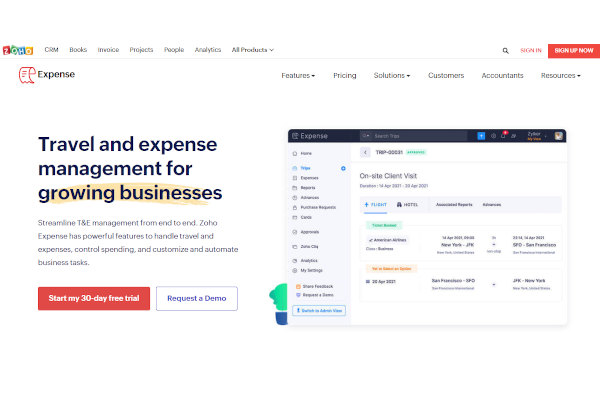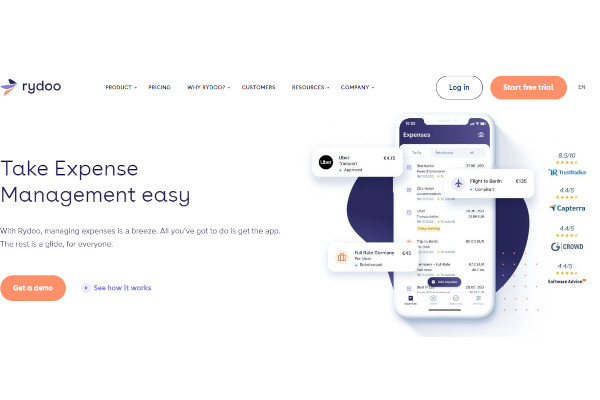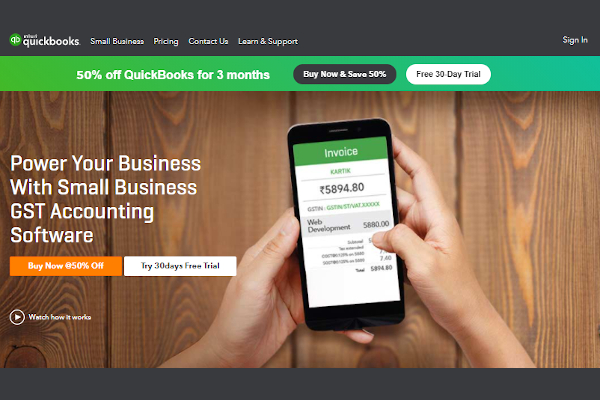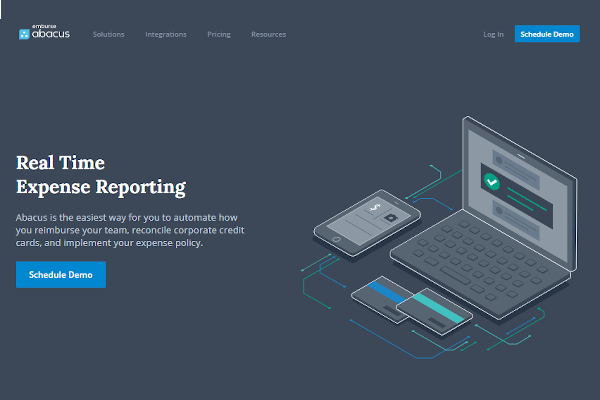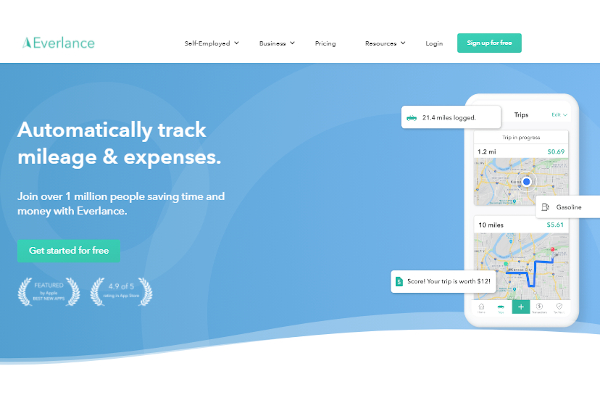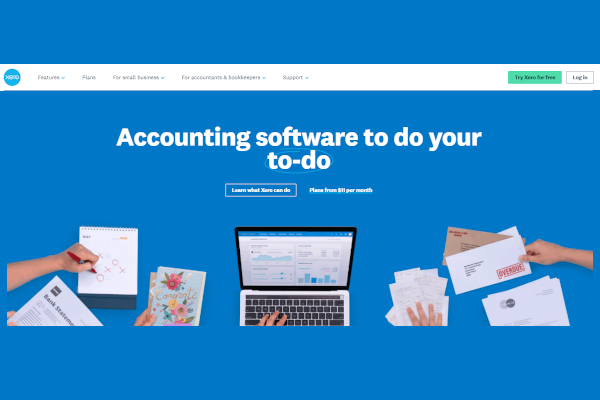When businesses have to keep track of their expenses, they can rely on their bills and accountants to do the work of expense tracking, right? We can’t be 100 percent sure of this. To ensure there is enough information on the expenses of the company, employees must do their part in tracking down the expenses they used for the company. But how can they do this? It’s simple with expense tracking software that allows them to record expenses from the palm of their hand. Let’s take a look at some of the best expense tracking software available right now.
11+ Expense Tracking Software
1. Zoho Expense
2. Expensify
3. Freshbooks
4. Certify
5. SAP Concur
6. Rydoo
7. Intuit Quickbooks
8. Abacus
9. Everlance
10. Fyle
11. Xero
12. Emburse
What Is Expense Tracking Software?
Expense tracking software is a financial management tool that allows employees of the company to record, track and monitor their company spendings. The software gives employees a system to record and submit expenses that companies have to pay, which are then monitored by employers and accountants to see if the expense is justified.
Benefits
The real-time nature of expense tracking software helps businesses keep documents of their spendings as their accountants keep tabs on these records through business activity monitoring. It also helps the company to keep on budget and avoid purchases that may put a strain on the finances in the future. This is extremely useful when it comes to tax season which accountants don’t have to find receipts and document their expenses at the last minute before submitting them to their tax commissioner The software also allows employees to track their own expenses in hopes that they get reimbursed for the company’s finances. It can also estimate financial forecasting much earlier as it tracks expenses and revenue in real-time.
- Helps businesses document their spendings
- Keeps the business on budget as much as possible
- Documenting expenses in real-time means less hassle during tax season
- Employees can possibly be reimbursed by recording their own expenses.
- Financial forecasting is easier to determine
Features
Expense tracking software gives employees many tools and features to keep track of their spendings. One of these features includes categorizing and tagging expenses such as office supplies, food, travel, etc. Categorizing these expenses is a must in order to give a clear idea of what kind of money is spent on these products. Another essential feature is its mobile app support, which is important when employees are spending company finances outside of the office. The software should also include an employee monitoring system where accountants and employers can see how much money employees spent. Some software may allow integration with the company’s bank accounts through their respective banking software to allow tracking of expenses done automatically in real-time. Some software also includes uploading a photo or document of receipts of the expense. Some software may also include a budget planner tool to give employees an idea of the expense limitations.
- Categorizing and tagging expenses
- Mobile app support
- Expense monitoring system
- Integration with banks for real-time tracking
- Upload photos or documents of expense receipts.
- Budget planner
Top 10 Expense Tracking Software
1. Certify
Certify allows their clients’ employees to effortlessly track their expenses from their computers or phones anywhere. Founded in 2008, the company has 200 employees and earned a revenue of $14 million in 2020.
2. Zoho Expense
Zoho Expense not only allows users to track their business expenses but also gives them the powerful tools to organizer their spendings in an easy interface. Zoho was launched in 2016 with over 7,000 employees and earned a revenue of $610 million in 2020
3. Freshbooks
Freshbooks helps small businesses to keep track of their employees’ expenses with accounting-focused tools and features. Founded in 2003, the company has over 500 employees and earned a revenue of $55 million in 2018.
4. Expensify
Expensify caters to both personal business users in tracking their expenses with an optional artificial intelligence system that can help users organize their spending records. Founded in 2008, the company has over 300 employees and a revenue of $100 million as of 2021.
5. Abacus
Abacus offers real-time expense tracking that allows companies to implement an expense policy within the software. Founded in 2013, the company has 623 employees and annual revenue of $ 6.2 million.
6. SAP Concur
SAP Concur lets companies take full control of their expenses with powerful tools such as receipt scanning. Founded in 1993, the company has over 4,000 employees and was acquired by SAP in 2013 with a reported figure of $8.3 billion.
7. Fyle
Fyle provides real-time expenses tracking with a simplified reconciliations system and allows integration with third-party accounting software. Founded in 2016, the company has 90 employees and annual revenue of $10.7 million.
8. Rydoo
Rydoo offers easy expense management tools with a simplified dashboard view and detailed analytical data. Founded in 2011, the company has 300 employees and earned annual revenue of $45.5 million.
9. Xero
Xero helps small businesses keep track of their expenses with all-in-one features such as receipt scanning and can perfectly tailor the software according to the business’ needs. Founded in 2006, the company has 3,642 employees and a revenue of $848 million as of 2021.
10. Everlance
Everlance helps their clients’ employees to save their time in tracking expenses with an automated system that tracks their spendings in real-time without having to manually input their expenses. Founded in 2015, the company has over 23 employees and a revenue of $6 million in 2020.
FAQ
What is the difference between expense tracking software and budget tracking software?
While both are financial software and the features are similar, it’s the scope and purpose that make them different. Budgeting is planning and estimates on how much money is going to be spent on a certain period of time which budget tracking software facilitates users with the tools to budget their finances. Expenses are how much money was spent to make a purchase, which expense tracking software gives users the tool to document their spendings.
Is it better to opt for automated expense tracking over manually inputting expenses?
It’s actually better to use both. Many expenses tracking software use automated software to automatically keep track of expenses without much input from the user. This is most useful when this software is connected to the company’s bank accounts. If needed, users will then edit the details of the expenses such as categorizing and labeling the expenses, attaching a photo of the receipt that contains the expense, and many more. The software’s automated system makes expense tracking easier for the users.
Can you generate and print out a document of expenses from the expense tracking software?
Some expense tracking software has the feature to generate a document copy of the expenses recorded in the software. This is helpful for accountants when they document the finances of the company, especially during tax season.
A company that implements expense tracking software in their business operations are guaranteed to have better financial practice in the working environments. The features of the software make it easy for everyone in the company to spend their company’s finances wisely.
Conclusion
Related Posts
10+ Best Chemical Software for Windows, Mac, Android 2022
12+ Best Vulnerability Scanner Software for Windows, Mac, Android 2022
4+ Best Bundled Pay Management Software for Windows, Mac, Android 2022
10+ Best Trust Accounting Software for Windows, Mac, Android 2022
10+ Best Patient Portal Software for Windows, Mac, Android 2022
13+ Best Virtual Reality (VR) Software for Windows, Mac, Android 2022
12+ Best Bed and Breakfast Software for Windows, Mac, Android 2022
15+ Best Resort Management Software for Windows, Mac, Android 2022
14+ Best Hotel Channel Management Software for Windows, Mac, Android 2022
12+ Best Social Media Monitoring Software for Windows, Mac, Android 2022
10+ Best Transport Management Software for Windows, Mac, Android 2022
10+ Best Other Marketing Software for Windows, Mac, Android 2022
10+ Best Top Sales Enablement Software for Windows, Mac, Android 2022
8+ Best Industry Business Intelligence Software for Windows, Mac, Android 2022
10+ Best Insurance Agency Software for Windows, Mac, Android 2022

